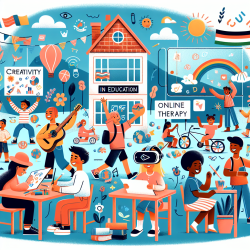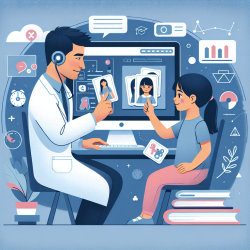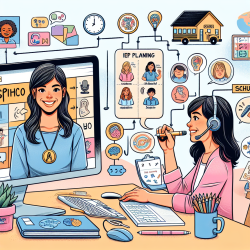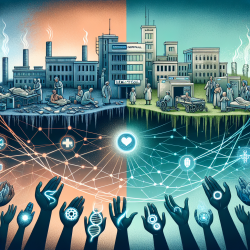Introduction
The concept of creativity has evolved significantly over the years, becoming a pivotal element in various fields, including education. In the research article "The Ideology of Creativity and Challenges of Participation," Michael Hanchett Hanson explores the multifaceted nature of creativity and its implications for participation in educational settings. As practitioners in the field of speech-language pathology and online therapy, it is essential to understand these dynamics to enhance our practices and improve outcomes for children.
The Ideology of Creativity
Creativity is often seen as a driving force for change and innovation. Historically, it has been associated with genius, individualism, and technological advancement. However, the definition of creativity remains ambiguous, leading to various interpretations and applications in different contexts. According to Hanson, this ambiguity is not a weakness but a strength, allowing creativity to serve as a platform for debate and exploration of critical societal issues.
Challenges of Participation
Hanson highlights the importance of participation in the ideology of creativity. He argues that educators, politicians, and other stakeholders play a crucial role in shaping the concept of creativity. By participating in this ongoing evolution, we can contribute to a more inclusive and responsible understanding of creativity, particularly in educational settings.
Implementing Participatory Models in Education
One of the key takeaways from Hanson's research is the potential of participatory models to transform education. Traditional educational practices often focus on individual creativity, emphasizing the generation of novel ideas. However, participatory models shift the focus to collaboration, integration, and the diverse roles individuals can play in the creative process.
- Inclusivity: Participatory models promote inclusivity by valuing diverse contributions to the creative process. This approach recognizes that creativity is not limited to generating ideas but also involves supporting, refining, and integrating these ideas into broader contexts.
- Relevance to Students: By emphasizing participation, educators can make creativity more relevant to students' lives. Students are already engaged in change through their interactions with culture, technology, and social dynamics. Participatory models allow them to see their roles in these processes.
- Preparation for Real-World Challenges: Participatory models prepare students for real-world challenges by highlighting the various roles they can play in creative endeavors. This approach aligns with the realities of professional environments, where collaboration and adaptation are key to success.
Encouraging Further Research
As practitioners, it is crucial to engage with the evolving discourse on creativity and participation. By exploring participatory models and their implications for education, we can develop more effective strategies for fostering creativity in children. This involves not only implementing these models in practice but also contributing to ongoing research and dialogue in the field.
Conclusion
The ideology of creativity, as explored by Hanson, offers valuable insights into the role of participation in educational settings. By embracing participatory models, we can create more inclusive and effective educational environments that foster creativity and prepare students for the challenges of the future. To read the original research paper, please follow this link: The Ideology of Creativity and Challenges of Participation.










